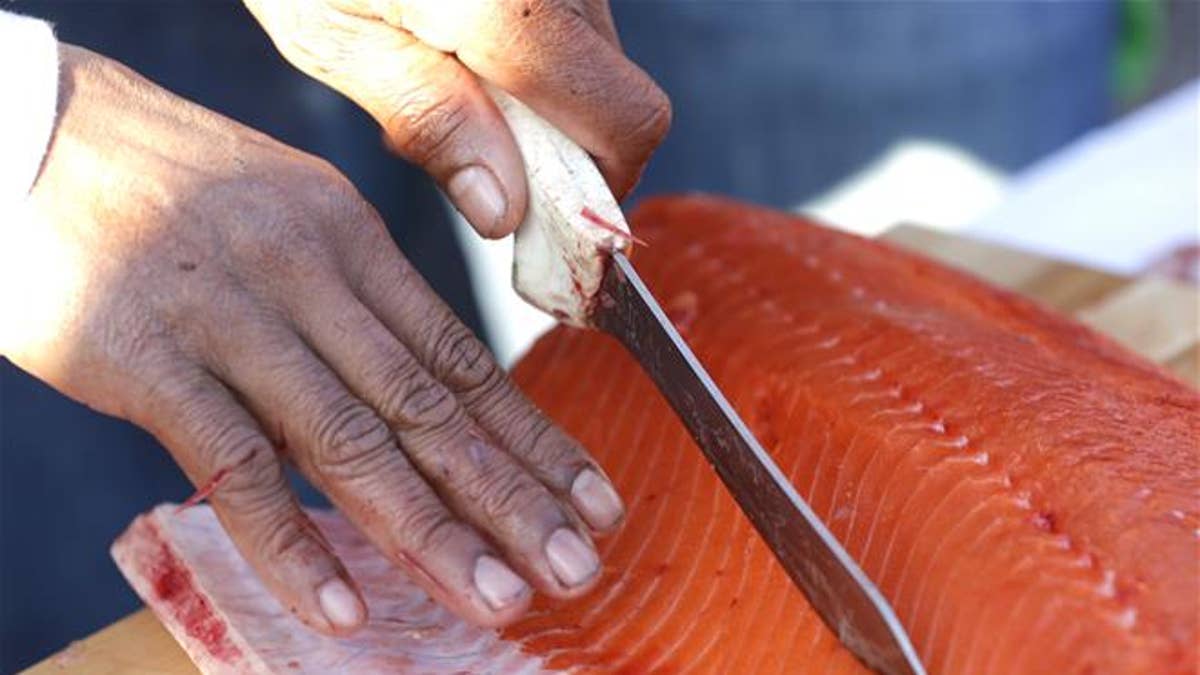
Is there a parasite in your dinner?
US salmon lovers feeling bad for those overseas infected with a pesky parasite can start worrying about themselves. The Japanese broad tapeworm, aka Diphyllobothrium nihonkaiense, is usually only found in fish from Asia's Pacific coasts, CNN reports, but per a study in the CDC's Emerging Infectious Diseases journal, wild salmon netted in Alaska were also plagued by the parasite.
Researchers now say that could mean salmon caught anywhere off North America's Pacific coasts could be affected. The scientists warn the problem could spread if not remedied: Because salmon is often packed and transported on ice (but not frozen), the tapeworm's larvae, or plerocercoids, may be able to survive the trip, possibly infecting consumers in Europe, New Zealand, China, and other parts of the US.
The researchers cut open 64 wild Alaskan salmon in 2013 to find the larvae (some up to 15mm long), and thanks to gene sequencing, they made an additional surprising discovery: Nearly all of the previous infections found in Japan, South Korea, and the Pacific coast of Russia that had been attributed to a different kind of tapeworm (Diphyllobothrium latum) were actually from D. nihonkaiense.
Per Food Safety Magazine, infection risk is upped when consuming raw or undercooked fish. A preventive medicine professor at Vanderbilt University School of Medicine tells CNN most infected humans remain asymptomatic—some may feel slight abdominal discomfort or nausea—though there are rare cases in which the infection can turn serious.
More From Newser
The CDC notes that freezing or cooking the fish will annihilate Diphyllobothrium parasites. (A Canadian man bit into a piece of salmon and fell into a coma.)
This article originally appeared on Newser: Tapeworm Thought to Be Only in Asian Salmon Arrives in US
